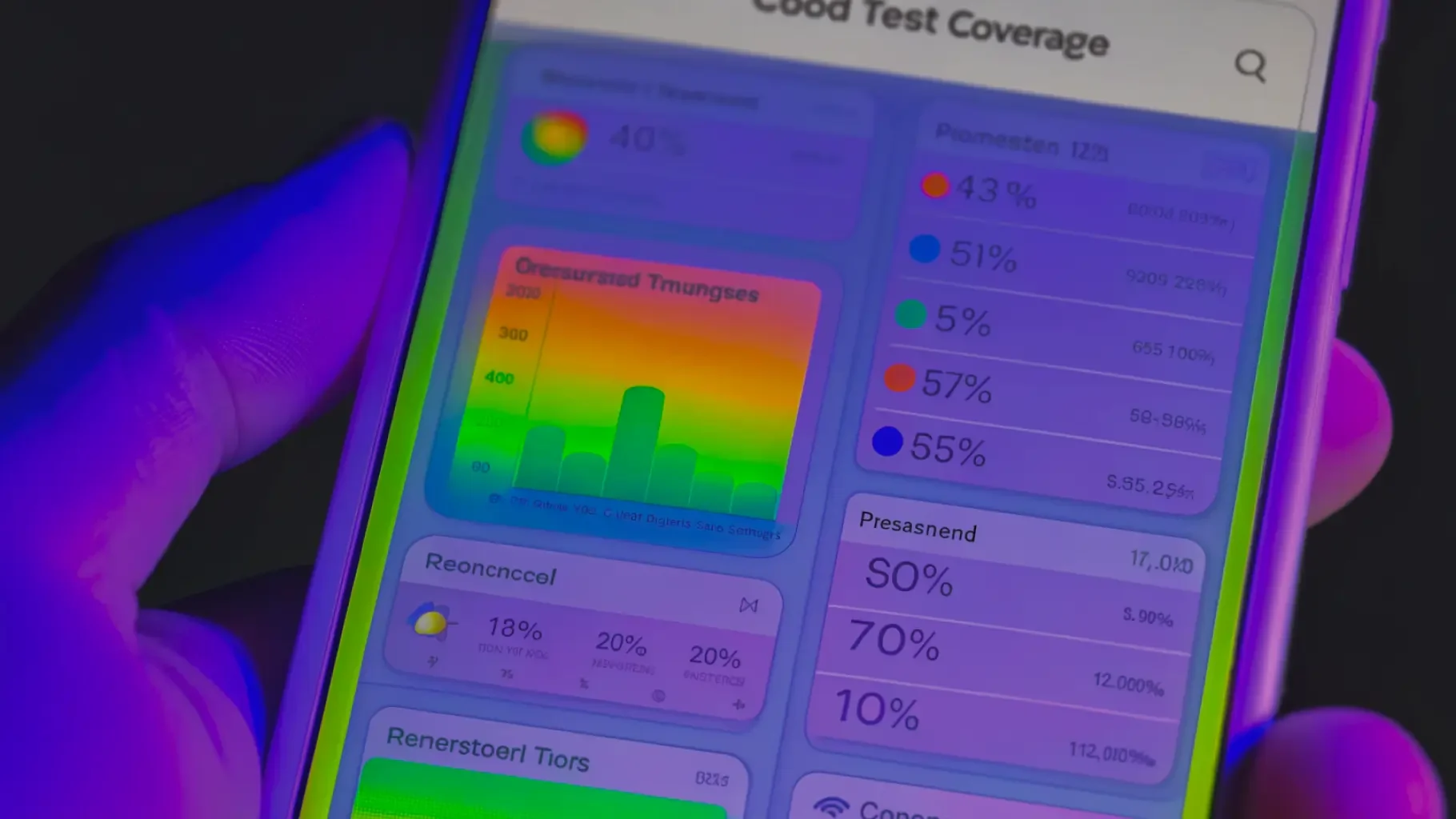Improving Test Coverage in Mobile Apps Using AI
You can’t fix what you can’t see. And in mobile app testing, poor test coverage means critical bugs slipping into production and users walking away. Between fragmented devices, constant UI tweaks, and tight release cycles, test coverage often becomes a moving target.
Manual efforts can’t keep up. And traditional automation breaks under pressure.
This is where AI steps in. Not to replace testers but to help you test smarter, faster, and more thoroughly.
In this blog, you’ll learn how AI improves mobile app test coverage by auto-generating test cases, healing brittle scripts, and catching visual bugs others miss. We’ll also cover practical tools (including how we’re doing it at Quash) and share actionable ways to get started.
Why Mobile Test Coverage Is So Hard to Get Right
Mobile apps don’t fail in obvious ways; they break silently on the devices you didn’t test. The challenge? Testing every possible combination of device, OS, and interaction path is practically impossible.
Here’s what gets in the way:
Device fragmentation: Hundreds of combinations of screen sizes, OS versions, and hardware specs.
UI instability: Small visual changes can break brittle test scripts.
Regression chaos: Each release risks breaking old features without warning.
Team constraints: You rarely have time or resources to test everything before release.
That’s why chasing 100% coverage manually often leads to false confidence or burnout. What you need is a smarter way to scale.

Get the Mobile Testing Playbook Used by 800+ QA Teams
Discover 50+ battle-tested strategies to catch critical bugs before production and ship 5-star apps faster.
How AI Boosts Mobile Test Coverage (The Right Way)
AI isn’t about testing everything, it's about testing the right things, faster and more accurately. Here’s how it works in practice:
1. AI-Generated Test Cases That Actually Make Sense
Modern AI tools analyze your codebase, user stories, and past defects to automatically create high-impact test cases. These aren’t generic they include:
Edge cases and failure paths that humans often overlook
Negative and boundary tests that simulate real-world misuse
Tests derived from real usage patterns and risk areas
This means broader coverage with less manual authoring. At Quash, we use this approach to scale coverage without slowing teams down.
2. Self-Healing Test Scripts That Don’t Break on UI Changes
You shouldn’t have to rewrite your automation every time someone changes a button.
AI-powered self-healing frameworks detect when locators change or workflows shift and update your scripts on the fly. This keeps test suites running smoothly even as your app evolves.
At Quash, we’ve built support for smart locators that reduce test flakiness and maintenance overhead.
3. Visual AI That Catches What Eyes Miss
Pixel misalignments, broken fonts, or layout bugs can wreck a user’s experience but often slip through code-based checks.
Visual AI compares UI snapshots across devices and versions to catch these issues instantly. You get:
Consistent visual validation across platforms
Less manual effort in visual inspection
Faster feedback in CI/CD pipelines
4. Smarter Test Prioritization Based on Real Risk
AI doesn’t just automate testing it strategically focuses it.
By analyzing past bugs, code churn, and app usage data, AI helps you prioritize:
High-risk features and workflows
Recently touched code with higher change impact
Tests with the most ROI for each build
This makes your test runs faster and more effective, especially in tight DevOps cycles.
5. Natural Language Test Creation for Non-Coders
Plain English in, test case out.
AI tools can now turn product requirements, acceptance criteria, or user scenarios into working automated tests. This means:
Product owners and QA leads can contribute directly
Less handoff between teams
Broader collaboration on coverage
Quash supports behavior-driven testing approaches that make this easy for cross-functional teams.
6. Guided Exploratory and Impact-Based Testing
AI isn’t just about automation it helps guide human intuition too.
By identifying untested or risky areas, AI highlights where exploratory testing matters most. Combined with impact analysis from recent code changes, it ensures you’re testing where it counts.
This drastically reduces wasted effort and helps your team uncover hidden issues early.
So, What Do You Get Out of All This?
Let’s talk outcomes, because fancy tech doesn’t matter if it doesn’t deliver.
More coverage, less manual effort. Especially on edge cases and evolving features.
Stable tests, even when the UI changes. Thanks to AI-powered healing and smart locators.
Faster releases with fewer surprises. By integrating AI into CI/CD pipelines.
Better use of your team’s time. Let automation handle the grunt work while testers focus on strategy and UX.
This is exactly how we think about automation at Quash: scale the right kind of coverage without burning out your QA team.
Tools That Help You Get There
Here’s a quick look at leading platforms using AI to improve mobile test coverage:
Tool/Service | Key AI Features |
AI-generated test cases, self-healing locators, visual regression, impact analysis | |
Visual testing, cross-device rendering, layout validation | |
Self-healing scripts, NLP test authoring, smart locators | |
Behavior-driven tests, auto-maintenance, visual checks in CI | |
Appium (w/ plugins) | AI-driven locator strategy, test failure prediction |
Getting Started: Best Practices to Apply Now
You don’t need a full AI strategy to start seeing results. Here’s how to get going:
Use AI test case generation to cover hard-to-reach areas and tricky scenarios.
Add self-healing capabilities to your existing automation for fewer brittle tests.
Integrate visual AI checks into your pipelines to stop UI issues before they ship.
Prioritize tests intelligently based on real usage and code changes.
Collaborate across teams by using natural-language test creation where possible.
Test Coverage Isn’t a Checkbox, It’s a Strategy
Test coverage is often treated as a metric to chase or a percentage to report. But the reality is, numbers alone don’t tell you much. A high coverage percentage doesn't guarantee that you're testing the right things, or that your users are getting a bug-free experience.
AI helps you rethink test coverage from the ground up. Instead of writing more tests for the sake of it, you can focus on writing better tests, faster. You can generate tests that actually reflect user behavior, maintain stability across rapid UI changes, and adapt to shifting codebases without constant human intervention.
At Quash, we believe that true test coverage is about visibility, speed, and precision. It's about catching the bugs that matter, before your users do. It's about freeing up your team to focus on meaningful testing work, not chasing broken scripts or trying to keep up with endless updates.
If you're serious about delivering quality mobile experiences, AI isn't optional, it's your best teammate. The goal isn't just more testing. The goal is smarter testing. And with the right tools, that goal is finally within reach.





